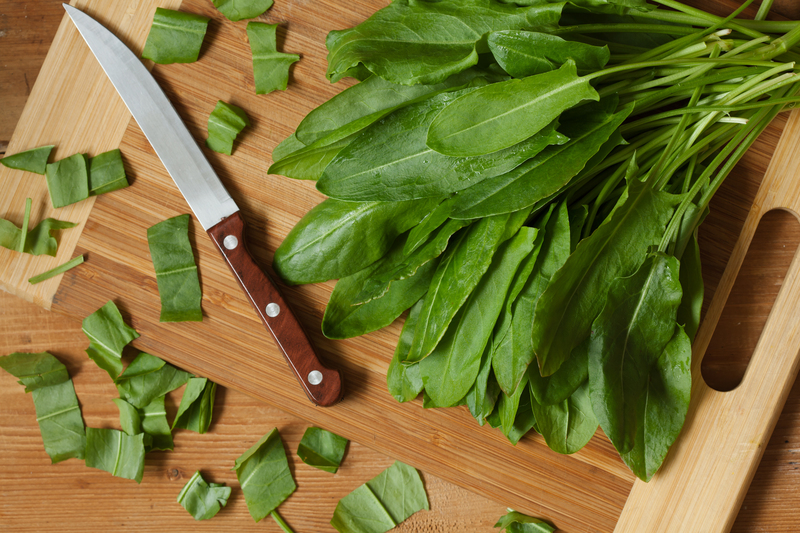Essential Steps to Protect Your Lawn from Summer Drought Stress
Summer brings sunshine and outdoor fun, but it also brings the threat of drought stress to your lush green lawn. Drought conditions can cause lawns to turn brown, become patchy, and struggle to recover, resulting in a less appealing and less resilient turf. With climate change making droughts more common, it's now more important than ever to learn the best practices for protecting your grass during the hottest and driest months. This comprehensive guide offers essential steps to protect your lawn from summer drought stress, ensuring your landscape stays healthy, vibrant, and resilient throughout the season.

Understanding Summer Drought Stress on Lawns
Drought stress occurs when the lawn cannot access enough water, either through rainfall or irrigation, to satisfy its needs. During heat waves and dry spells, this can quickly lead to stressed grass, discoloration, and even permanent death of lawn areas. Other symptoms of drought-damaged grass include slow growth, folding leaves, a bluish-grey cast to the blades, and footprints that don't bounce back after walking.
Preventing and managing summer drought stress involves a mixture of smart watering, mowing, soil preparation, and ongoing lawn care tactics. Let's explore the most effective ways to safeguard your turf below.
1. Choose the Right Grass Species for Drought Resistance
The foundation of a drought-resistant lawn begins with the type of grass you plant. Some grass varieties are naturally more tolerant of dry conditions than others. If you live in a region prone to summer drought, consider reseeding or over-seeding with these more resilient options:
- Bermudagrass: Warm-season and highly drought-tolerant.
- Zoysiagrass: Deep-rooted and dense, making it excellent for dry, hot summers.
- Tall Fescue: Known for an extensive root system, providing drought endurance.
- Buffalograss: Native to the Plains, uses less water than most lawn grasses.
- Fine Fescue: Good for shade and drought, suitable for cooler climates.
If you're establishing a new lawn or renovating an existing one, investing in drought-tolerant grass seeds or sod is the first and most effective step to protect lawns from summer water stress.
2. Water Wisely to Prevent Lawn Drought Damage
When rainfall is scarce, how and when you water your lawn will make all the difference. Efficient watering not only saves water but also helps your grass develop deeper roots, making it more resilient during dry periods.
Best Practices for Watering Your Lawn During Drought
- Water deeply and infrequently. Aim for about 1 inch of water per week, delivered in one or two sessions. This encourages roots to reach deeper soil layers.
- Early morning watering is ideal. Watering between 5 am and 9 am reduces evaporation loss and allows grass blades to dry during the day, helping prevent disease.
- Avoid shallow or frequent watering. This leads to weak, shallow root systems and increases vulnerability in drought conditions.
- Use a rain gauge or moisture meter. This ensures you aren't over- or under-watering.
If local drought warnings require you to minimize lawn irrigation, prioritize establishing new lawns and landscaped turf over mature, established grass, as young lawns are more susceptible to damage.
3. Set Your Mower for Summer Survival
Mowing is more than just keeping your yard tidy. The way you mow can significantly impact how well your turf weathers drought.
- Mow high during summer droughts. Set your mower blade to 3-4 inches. Taller grass shades the soil, reduces evaporation, and helps roots grow deeper.
- Never "scalp" your lawn by removing more than one-third of the grass blade at a time.
- Keep mower blades sharp. Dull blades tear grass, making it more vulnerable to drought stress and disease.
- Leave clippings on the lawn. They return moisture and nutrients back to the soil, acting as a free mulch.
4. Aerate and Amend Soil for Better Water Retention
Healthy soil is the foundation for a resilient, drought-tolerant lawn. If your yard has heavy clay, compacted, or poor soil, lawn aeration--the process of allowing air, water, and nutrients to reach grass roots--is a must.
- Aerate your lawn in spring or fall. Aeration improves soil structure, enhances drainage, and helps roots grow deeper--critical for drought resistance.
- Add organic matter. Top-dressing with compost after aeration increases water-holding capacity in sandy soils and improves drainage in clay soils.
- Test and amend your soil. Use a soil test to identify deficiencies and correct pH, which helps grass access nutrients during stressful periods.
5. Use Mulch to Retain Moisture and Reduce Stress
Mulch isn't just for flower beds. Applying a layer of organic mulch around trees, garden beds, and on exposed soil patches can dramatically reduce evaporation and moderate soil temperature, helping your lawn recover from drought stress.
- Apply 2-4 inches of mulch around trees and beds. Wood chips, shredded leaves, pine needles, or grass clippings all make effective mulches.
- Never pile mulch against grass blades or tree trunks. Keep mulch a few inches away to prevent rot and encourage healthy growth.
6. Minimize Lawn Traffic During Drought Periods
Drought-stressed grass is weaker and less able to recover from wear and tear. During severe summer droughts, reduce foot traffic, avoid moving heavy equipment across the lawn, and limit children and pets playing on the turf. This allows grass to focus on survival and recovery rather than repair.
7. Fertilize with Care: Don't Overdo It During Drought
While fertilization helps establish a healthy lawn, applying fertilizer during drought can do more harm than good. Fertilizer stimulates growth, increasing water demand--a risky proposition when water is scarce.
- Avoid fertilizing during active drought. Wait until rainfall returns and the grass resumes growing before feeding.
- If you must fertilize, use slow-release products. Organic or slow-release granular fertilizers provide nutrients over time, reducing the risk of burning drought-stressed grass.
Always follow fertilizer label instructions and never exceed recommended application rates.
8. Control Weeds, Insects, and Lawn Diseases
Unwanted weeds compete with grass for precious moisture, while pests and diseases exploit stressed grass, making your lawn more susceptible to drought damage. Integrated pest and weed management is crucial during dry spells.
- Hand-pull or spot-spray broadleaf weeds. Target only problem areas to avoid stressing your grass further.
- Monitor for signs of insect or fungal damage. Brown patches, strange spots, or thinning may indicate issues that need to be addressed promptly.
- Avoid using herbicides during high heat or drought. These can stress plants further and may not be as effective.
9. Embrace Dormancy as a Survival Strategy
Cool-season grasses, like Kentucky bluegrass and fescues, may naturally turn brown and go dormant in severe drought. This isn't necessarily a sign of death--it's a built-in survival mechanism.
- Allow cool-season lawns to go dormant during hot, dry spells. Maintain the grass by watering just enough (about 1/2 inch every 2-4 weeks) to keep crowns alive--the part of the grass that regrows when conditions improve.
- Don't apply herbicides or fertilizers to dormant lawns.
Rest assured that most healthy lawns can survive 4-6 weeks of dormancy and will recover when cooler, wetter weather returns.
10. Adjust Lawn Care Schedules to Local Weather Conditions
No two summers--or lawns--are the same. Monitor local drought forecasts, rainfall, and lawn health each week. Adapt your care strategies as needed, increasing mulch, reducing mowing, and fine-tuning irrigation to match your turf's actual needs.
Bonus: Consider Reducing Lawn Size for Water Efficiency
One long-term approach to protecting your landscape against summer drought stress is to reduce the amount of thirsty lawn. Consider replacing portions of your grass with native plants, ground covers, or xeriscaping. These choices require less water and maintenance, contribute to biodiversity, and make your property more drought-resistant and resilient.

Frequently Asked Questions: Protecting Lawns from Drought Stress
How do I know if my lawn is suffering from drought stress?
- Grass turns bluish-gray or dull green.
- Footprints or mower tracks persist after walking.
- Growth slows dramatically.
- Soil becomes hard, dry, and pulls away from the roots.
How often should I water my lawn during a drought?
Water deeply, once or twice a week, giving about 1 inch (2.5 cm) of water each time. Adjust for local rainfall and soil conditions.
Can a brown lawn recover after a drought?
Yes, in most cases. If the roots and crowns are alive, the lawn will green up again when sufficient water returns. Dormant lawns can survive 4-6 weeks without significant irrigation.
Is it better to mow or leave the lawn uncut during drought?
Mow less frequently and raise the mowing height. Taller lawns provide shade to the roots and retain moisture better.
Conclusion: Protecting Your Lawn from Summer Drought Stress
Drought doesn't have to spell disaster for your yard. By understanding your lawn's needs and following these essential drought protection steps, you can minimize damage and help your grass recover quickly once favorable weather returns. Remember: Choose the right grass, water correctly, mow smart, manage soil, and adapt your care to current conditions. With the right strategies in place, your turf can thrive--even in the hottest, driest days of summer.
Take proactive steps today and keep your lawn healthy, green, and beautiful all season long, no matter what the summer brings!